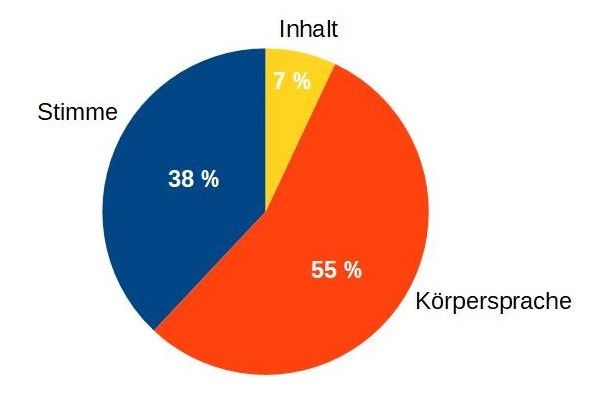“Speak nicely!”, the ironic Austrian request to refrain from using vulgar or derogatory language, takes on a whole new meaning in these times.
Today, for the first time on television, I saw and heard a correspondent formulating her contribution wearing a mask: perfect articulation, correct volume so that everything could be clearly understood. I was impressed.
As strenuous and for some people uncomfortable as it is to make oneself understood with the help of a mouth and nose protector, non-verbal communication is receiving increased attention these days.
In my last communication training, which I was able to hold in the face-to-face format before the lockdown, a work assignment for the participants was to design two different posters in two working groups for two different topics and target groups. The task had concrete criteria against which the final result could be measured. One process criterion was: “Please carry out this assignment silently“.
After an initial horror on the faces of the participants, the two teams moved closer together in their working rooms (one group was sitting around a round table, the other team stood like an ice hockey team shoulder to shoulder with its “coach” standing directly at the flipchart).
There was a palpable energy in the room, coupled with a high level of attention and concentration in working together. The final result was four posters that met the specified criteria exactly, without the teams having exchanged even a single word with each other.
If we cannot talk to each other, non-verbal communication is even more important in our lives than it already is when we want to make ourselves understood.
The “Mehrabian circle” is often used to illustrate the relationship between spoken language and non-verbal content: Thus, the effect of our communication is only 7% from range (what we say), 38% from our voice and 55% from our body language.
However, this generalisation does not reflect the actual research results of Mehrabian. He had looked at communication with the question: “What do people pay attention to if the other person’s behaviour is not congruent for them? “In other words, verbal and non-verbal messages do not go together. In this case, the body language of the interlocutor is much more important than what he says.
This time offers us an excellent opportunity to deal with each other in a more focused way again: A smile under the mouth-and-nose protection is quite noticeable, we only have to look – and to take care with ourselves that we remain as “clean” and congruent as possible in our limited communication.
It is precisely this limitation that offers a good “training opportunity” for our communication skills, verbal and non-verbal. Let us make use of it.


Recent Comments